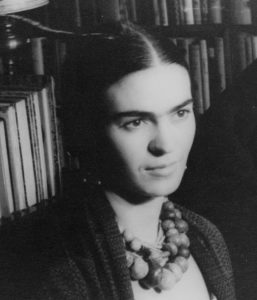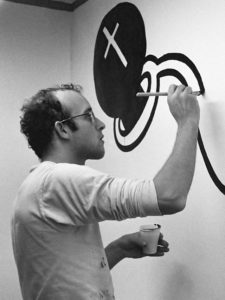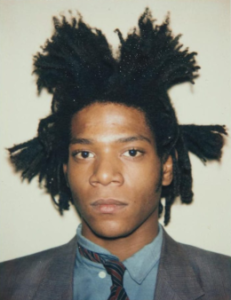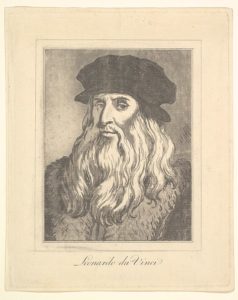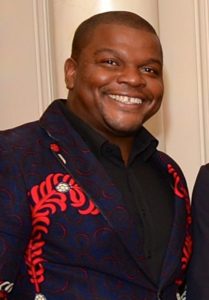It's nearing the end of Pride Month, and I would be remiss if I didn’t write something apropos celebrating those great artists who also happen to be community members. LGBT people have always been among us, and this time of year is the time to single them out, elevate them, and celebrate them. So this is my list of LGBT artists, both historical and contemporary. This is by no means a comprehensive list, nor is it a ranking. These are just some of my favorites. I might even make another since there are too many to narrow down to just five.
Frida Kahlo
Despite the self-portrait being an incredibly personal work that most artists would probably keep to themselves, most of Frida Kahlo’s best-known works involve her own image. Whether it’s The Two Fridas, Self-Portrait with Cropped Hair, or Diego y Yo, Kahlo’s personalization of her art has made her an icon. She was also incredibly influential by blending Mexican folk art with other symbols in a surrealist fashion, often providing commentary on her own experiences and contemporary issues like gender, sexuality, and Mexico’s relationship with the United States. Her portrayal of herself through her art became a sort of reclamation, defying traditional gender roles and symbolizing female empowerment. Further, she celebrated Mexico’s indigenous heritage when the country was recovering from its bloody revolutionary wars and redefining itself through the arts. Kahlo’s husband Diego Rivera was also involved in this through his famous murals. Kahlo’s relationships were not limited to just men, though. Her turbulent marriage to Rivera remains one of the most oft-discussed aspects of her life, but her diaries and journals contain love letters to other men and women. Some speculate that she had an affair with renowned Mexican singer Chavela Vargas. Additionally, when Kahlo lived in New York for three months, she allegedly had affairs with the photographer Nickolas Muray and the great American painter Georgia O’Keeffe.
Keith Haring
Some artists on this list are not explicitly queer artists but rather artists who happen to be queer. But Keith Haring was definitely not one of those. He interwove his gayness through his art. Influenced by street art, European abstract painting, and popular culture, Haring developed his own visual language, using symbols like the heart, barking dogs, and what became known as the “radiant baby”. In doing so, he became a central member of New York’s underground art scene in the 1980s along with Jean-Michel Basquiat and fellow Pittsburgh native Andy Warhol. Haring also emphasized accessibility. He sought to remove art's perceived elitism by bringing art into people’s everyday life. He did so by doodling on blank advertising space in the subway, receiving commissions for large-scale public murals, and opening up his Pop Shop in 1986. His art also had direct messages, including opposition to South African apartheid, nuclear disarmament, environmentalism, and drugs. As a gay artist active in the 1980s, Haring called attention to the AIDS epidemic and the Reagan administration’s embarrassing silence on the issue. His volume of work on this particular topic increased following his own HIV diagnosis in late 1988. One of his most famous works is his 1989 mural Once Upon a Time…, located in the second-floor bathroom of the Lesbian, Gay, Bisexual & Transgender Community Center on West 13th Street in Greenwich Village. It is an incredibly sexually-explicit work that serves as a reminder of hookup culture among LGBT people in a time before HIV/AIDS. It is confrontational eroticism, but it is also a cautionary tale. Even over thirty years after his death, Haring’s style and visual language persist across our culture, and his works remain popular today, influencing contemporary street and pop artists like Banksy and KAWS.
Jean-Michel Basquiat
Jean-Michel Basquiat is considered one of the greatest American artists of the late twentieth century, and especially one of the biggest stars of the underground art scene in New York. Like many of his colleagues, Basquiat sought to defy convention in his work. Born to a Haitian father and a Puerto Rican mother in Brooklyn, much of his work dealt with ideas of race and colonialism, as well as the Black and Caribbean experience in America. He even sought to defy convention through his preferred media, ranging from acrylic paints to crayons applied to anything from burlap to linen, paper, and cardboard. Though many of his friends were aware of his romantic and sexual relationships with men and women, that part of his life rarely explicitly appeared in his paintings, which means many are often surprised when they learn about Basquiat’s bisexuality. His girlfriend Suzanne Mallouk once said that Basquiat was “attracted to people for all different reasons. They could be boys, girls, thin, fat, pretty, ugly… He was attracted to intelligence more than anything and to pain.”
Leonardo da Vinci
Leonardo was, without a doubt, one of the most remarkable humans who ever lived. Not only was he an artist, but he was an inventor, an engineer, a scientist, an architect, and a ninja turtle… wait, wrong one. Furthermore, as far as historical figures go, there are few people whose sexuality and personal life have been more vigorously discussed. Despite the extensive notes and journals he left behind, Leonardo rarely commented on his personal life, leading to much speculation about his sexuality. Leonardo never married, and there is little documentary evidence that he ever had romantic or sexual relationships. Some have hypothesized that he had romances with friends and pupils, including Andrea Salaì and Francesco Melzi. Others say that he was dedicated to his work to the point that personal relationships were not a priority. The only piece of documentary evidence that alludes to Leonardo’s sexuality is a legal document from 1476. At the time, Leonardo was a 24-year-old apprentice in the workshop of the sculptor Verrocchio. He was named in a denunciation that accused him and three others of engaging with a male prostitute. The charges were eventually dismissed on a technicality since the denunciation was anonymous and therefore did not meet legal standing. Some historians speculate that while Leonardo was probably queer by modern standards, this legal case eventually drove him to celibacy, explaining his lack of personal relationships.
Kehinde Wiley
Moving out of the Renaissance into something more contemporary, Kehinde Wiley is one of the most in-demand portraitists working today. Wiley’s style is defined by his expert synthesis of the conventions of Old Master portraiture with elements of contemporary street art. For example, when I last visited the Brooklyn Museum, I was particularly struck by his 2005 painting Napoleon Leading the Army Over the Alps. The work borrows from Jacques-Louis David’s equestrian portrait of Napoleon Bonaparte, replacing the alpine background with a red and gold decorative pattern and placing a Black man in military fatigues on horseback instead of the infamous French emperor. Similarly, the Anthony van Dyck portrait Charles I at the Hunt inspired Wiley’s Le Roi au le Chasse II, which sold for $280K hammer at Sotheby’s New York. Wiley’s goal is to depict people of color in positions of power previously reserved for European royalty and great military leaders. He elevates marginalized communities by using random people on the street as his kings and emperors. Though he’s been working since 2001, Wiley shot to fame in 2018 when the National Portrait Gallery commissioned him to create a portrait of President Barack Obama. In the painting, the president is sitting in a simple wooden chair against an incredibly verdant background featuring chrysanthemums (representing Chicago), jasmines (representing Hawaii, the state of his birth), and African blue lilies (representing his father’s native Kenya). He is the first Black artist and the first LGBT artist to create an officially-commissioned presidential portrait. Wiley identifies as gay, and some have commented on how his portraits’ subjects sometimes subvert gender norms. Conceptions of gender and sexuality have changed drastically in the centuries since Anthony van Dyck and Jacques-Louis David were alive. Therefore, expressions of power and luxury expressed in the original works can seem camp or even feminine by some modern standards. Taking a person of color walking the streets today and placing them in those poses and clothing only highlights this.

